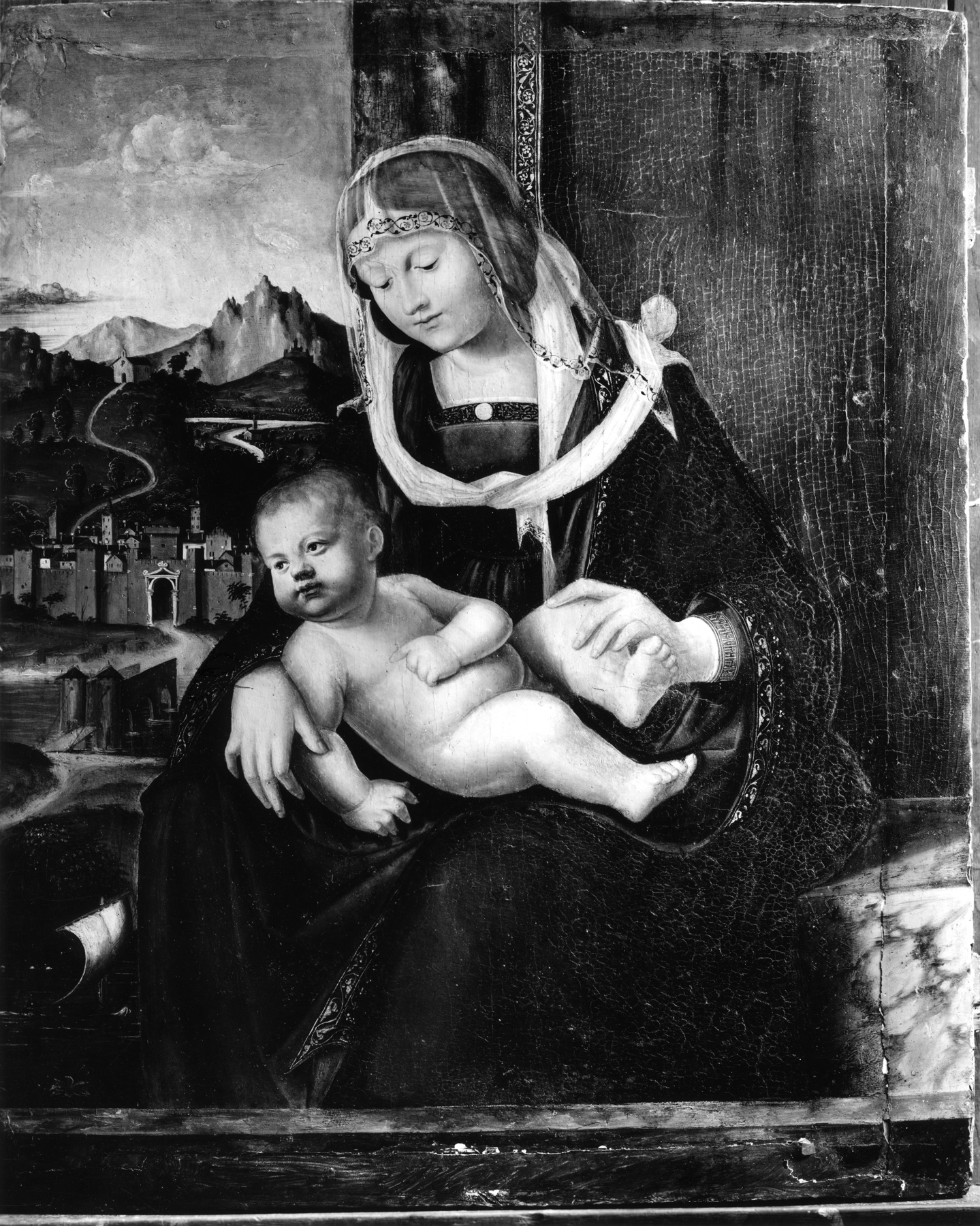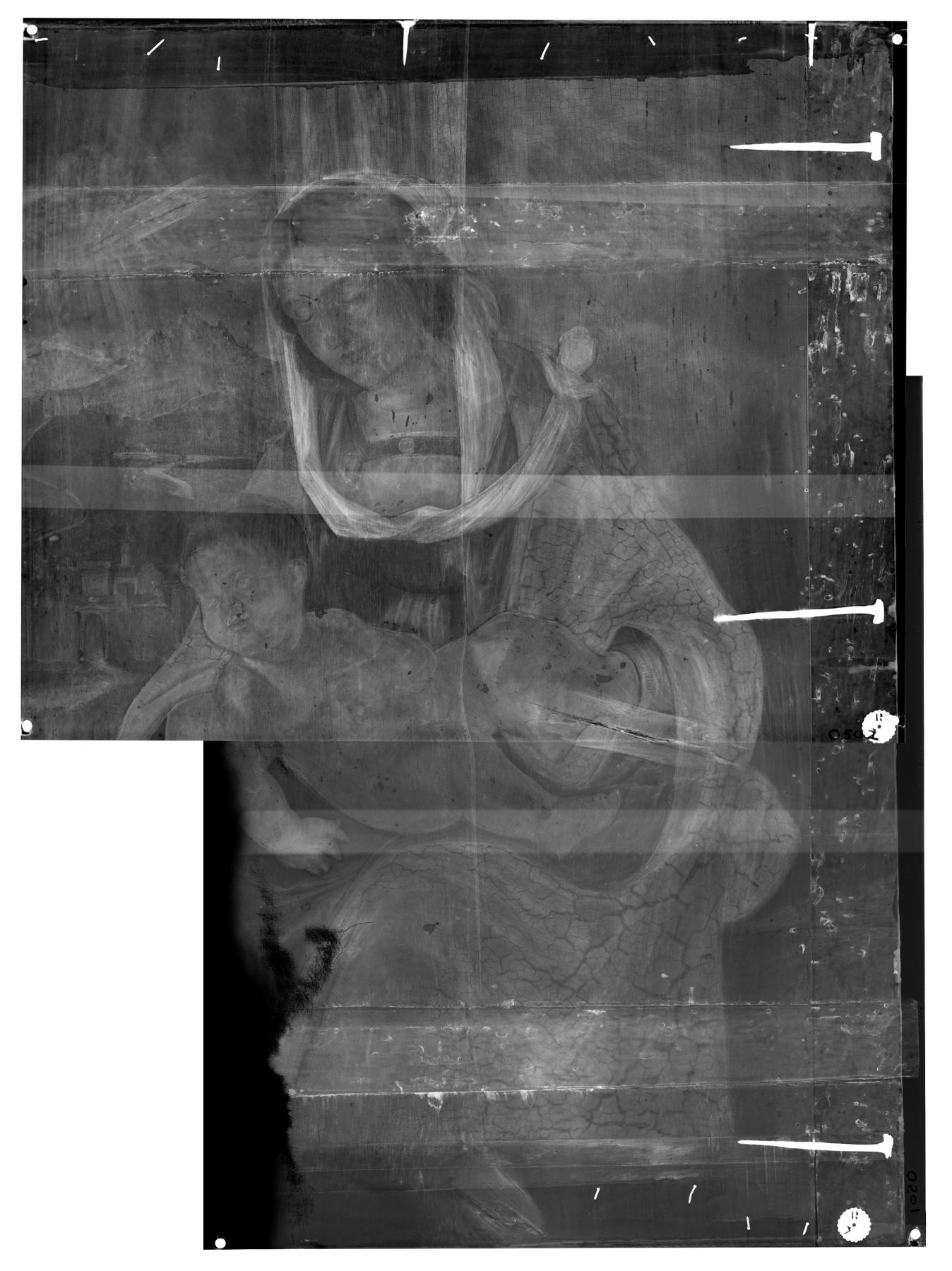Madonna and Child
(Renaissance Europe )
In this picture the Madonna holds the Christ Child on her lap before a distant landscape. Presumably intended for a domestic interior, the painting appears to have been executed in the north Italian city of Parma in the early 1500s. The poses of the figures are loosely derived from the work of the great Venetian painter Cima da Conegliano (1459-1517) who shipped two major altarpieces in Parma by the mid-1510s (both now in the Pinacoteca, Parma). The landscape is likewise derived from Cima but the soft, bulky figures have more common in paintings produced in the circle of the Parma's most prominent resident painter, Filippo Mazzola (ca. 1460-1505). For a work by Mazzola, see Walters 37.1056.
Provenance
Provenance (from the French provenir, 'to come from/forth') is the chronology of the ownership, custody, or location of a historical object. Learn more about provenance at the Walters.
William Beckford, Fonthill Abbey [date and mode of acquisition unknown]; William M. Laffan [date and mode of acquisition unknown] [no. 55]; Henry Walters, Baltimore, 1902 [mode of acquisition unknown]; Walters Art Museum, 1931, by bequest.
Geographies
Italy, Parma (Place of Origin)
Measurements
Painted surface H: 23 1/4 x W: 18 1/2 x D: 1 1/16 in. (59.1 x 47 x 2.7 cm)
Credit Line
Acquired by Henry Walters, 1902
Location in Museum
Not on view
Accession Number
In libraries, galleries, museums, and archives, an accession number is a unique identifier assigned to each object in the collection.
In libraries, galleries, museums, and archives, an accession number is a unique identifier assigned to each object in the collection.
37.523




